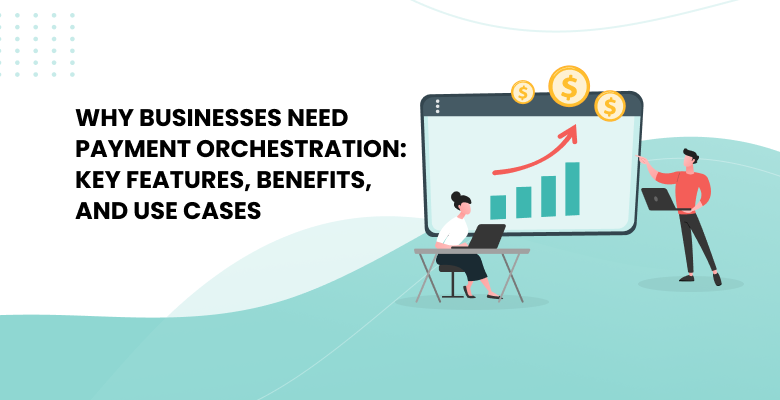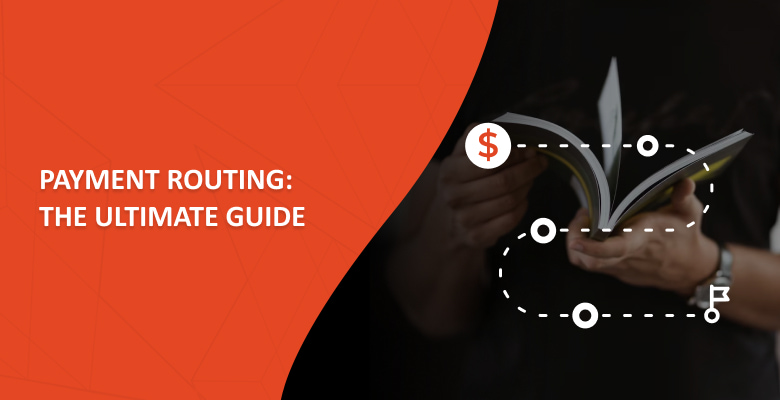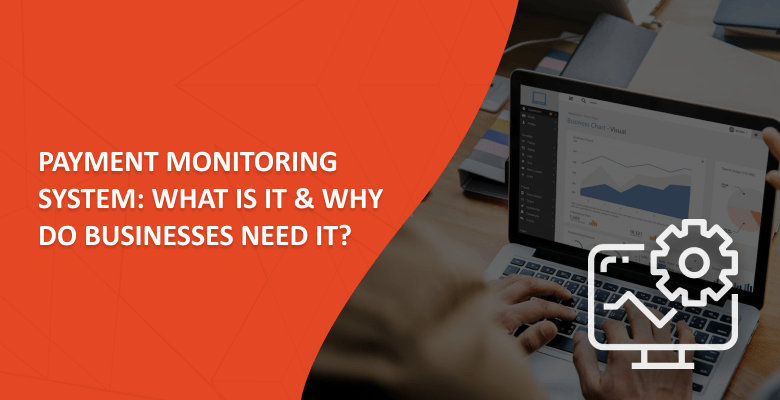
- What is the merchant onboarding process?
- Manual merchant onboarding VS automated merchant onboarding: Best practices
- Step-by-Step: How Merchant Onboarding Works
- What documents are required for a merchant onboarding?
- Compliance and fraud prevention in merchant onboarding
- Merchant Onboarding Services and Solutions
- Hassle-Free Merchant Onboarding with Akurateco: Your Quick Start Guide
- FAQ
With online payments solidifying themselves as a vital part of our everyday lives, merchants are quickly adopting financial technology services. A crucial process that cannot be overlooked when searching for a payment solution is merchant onboarding. This process verifies merchants’ security and aims to allow them to accept payments for goods and services as quickly as possible. While this procedure is well known to every merchant who has partnered with a payment solution, there are various nuances affecting its efficiency.
In this article, we’ll explain what is merchant onboarding, how it works, which documents businesses need to prepare, and, most importantly, how to simplify and automate it for better results.
What is the merchant onboarding process?
Merchant onboarding is the process through which payment software providers set up businesses to accept payments. It refers to the series of actions taken to register a merchant with a payment processor or acquirer.
When a merchant wants to accept payments for goods and services online by partnering with a particular payment system vendor, they need to undergo an onboarding process to ensure they are trustworthy and eligible to receive payments.
Manual merchant onboarding VS automated merchant onboarding: Best practices
There are two ways payment service providers (PSPs) and other fintech solutions handle merchant onboarding – manually or automatically. As your business scales and the number of merchants you work with grows, choosing between manual and automated onboarding becomes increasingly important.
Below, we break down the challenges of manual onboarding and explain how automation can streamline operations, improve efficiency, and elevate the merchant experience.
The pitfalls of manual merchant onboarding
There are several things you should take into account when onboarding merchants manually:
- Operational bottlenecks and resource strain.
Manual merchant onboarding requires merchants to send documents one by one to an account manager. As onboarding requests increase, your team either needs to scale, which is costly, or face delays that slow down operations and increase overhead.
- Slow approvals and poor merchant experience
High workloads, time zone differences, and limited availability often result in long wait times before merchants can start accepting payments. These delays harm the first impression and may cause merchants to lose confidence in your service early on.
- Scattered communication and disorganized data
With files shared across emails and messengers, onboarding data becomes fragmented. Your team must manually collect and input everything into your system, a process that’s inefficient and prone to errors, especially when dealing with multiple merchants at once.
The case for automated merchant onboarding
Now that we’ve covered the manual merchant onboarding process, let’s move on to automated merchant onboarding.
What is automated merchant onboarding?
Automated merchant onboarding allows merchants to fill in application forms and upload all required documents directly within a vendor’s platform, at their own pace and convenience. This significantly cuts down on unnecessary communication and accelerates the entire onboarding process. The goal? To reduce friction, save time, and help merchants start accepting payments faster.
Here’s how it helps payment service providers:
- Merchants onboard themselves
With automation, merchants can begin the process directly from your website and follow step-by-step instructions without waiting for a representative. Leading providers, such as Akurateco, allow merchants to access the admin panel during onboarding to review technical documentation and even test the system, all on their own terms.
- Operational efficiency for PSPs
Your team’s role shifts from performing manual tasks to monitoring merchant progress, reviewing submitted data, and supporting where needed. With automation, a task that used to require a dedicated team of three can now be handled by one employee. Notifications help your team stay updated on merchant status without constant follow-up.
- All data in one place — no CRM needed
Automated platforms consolidate all onboarding information into one centralized system, such as a Merchant Card. This removes the need for external CRM tools and ensures all required data is easily accessible in one place.
- Customization and scalability
Advanced systems also allow PSPs to tailor onboarding forms based on the merchant’s country of incorporation or business model. For instance, Akurateco enables you to customize forms according to your operational and regulatory needs, enhancing flexibility and compliance.
Step-by-Step: How Merchant Onboarding Works
Now that we have uncovered the merchant onboarding meaning, let’s move on to the steps it involves. The merchant onboarding process flow depends on the business’s region of operation and the payment software provider’s instructions.
However, there are basic steps for onboarding merchants. They include:
Submitting the application
To start onboarding, a company should fill out an application and attach all required documentation. It includes business licenses, identification documents, financial statements, etc.
Performing verifications and due diligence
Next, the payment provider thoroughly checks this information. They verify the merchant’s identity, business legitimacy, and financial stability. Also, they may conduct Know Your Customer (KYC), Know Your Business (KYB), and Anti-Money Laundering (AML) checks.
Assessing risks
Following that, they evaluate the potential risk associated with onboarding the merchant. It involves assessing factors like the business’s industry, transaction volume, and historical data.
Implementing technical integration
Here, the provider sets up the necessary payment infrastructure. It may include API integrations, system testing, etc.
Conducting compliance and security checks
The provider ensures that the merchant meets all regulatory requirements. Also, if payments are processed on the company’s website, they must adhere to security standards like Payment Card Industry Data Security Standards (PCI DSS).
Activation
Once all checks are completed and the system is set up, the merchant account will be activated. After this, the business is ready to accept payments.
What documents are required for a merchant onboarding?
Having all the necessary documentation in advance will save businesses a lot of time during the merchant onboarding process.
Here’s what to prepare:
- Business license – proves that the business is legally registered.
- Tax Identification Number (TIN) – for tax purposes.
- Bank account information – connects the merchant’s bank account to the payment processing system.
- Proof of identity – a government-issued identification number (ID) of the business owner.
- Proof of address – utility bills or other documents showing the business’s physical address.
- Financial statements – recent bank statements or financial records confirming business financial health.
- Ownership information – details about business ownership.
- Payment processing history – if businesses switch providers, previous payment processing statements may be required.
- Compliance certificate – any relevant compliance certifications, such as PCI DSS (if necessary).
You might also like:
Compliance and fraud prevention in merchant onboarding
As one of the main goals of merchant onboarding is to ensure businesses’ security, maintaining compliance with security standards and regulations is vital. In addition to PCI DSS compliance, companies must also adhere to KYC and KYB requirements. Let’s explore them in detail.
Know Your Customer
KYC is a regulation requiring businesses to verify their customers’ identities. It is used by Payment Service Providers (PSP), payment software vendors, banks, and other financial institutions. The main purpose of KYC is to prevent payment fraud, including money laundering, terrorist financing, and other illegal activities. Based on the KYC check results, the company’s application will be either approved or declined. However, legitimate businesses have no need to worry. They will pass the KYC check, which they should become accustomed to, as it will be conducted not only during merchant onboarding but also regularly after.
Know Your Business
Know Your Business (KYB) deals with the same issue but for businesses. It aims to secure financial technology and financial services companies from merchant-initiated fraud. As a part of KYB, they need to confirm the legitimacy of businesses, their registration licenses, proof of stakeholders’ identities, and compliance with anti-money laundering legislation. After conducting the necessary due diligence, payment providers and financial institutions can assess the risks associated with partnering with particular businesses and make an informed decision.
Merchant Onboarding Services and Solutions
Several merchant onboarding solutions and services are available to businesses. They range from comprehensive merchant onboarding software for PSPs to specialized technologies designed to automate specific aspects of the process.
Key solutions include:
Payment gateway merchant onboarding
If businesses adopt a single-acquirer approach, they can complete payment gateway merchant onboarding. In this case, the company only needs to interact with one PSP, simplifying its setup. Yet, it limits their variability in choosing various payment providers. It may also expose them to delayed or failed payment processing in case their PSP experiences issues on their side.
Payment software provider merchant onboarding
If merchants want to integrate multiple banks and PSPs, they can use comprehensive payment software that consolidates these integrations under one roof, such as a payments orchestration platform. This way, they will not need to leverage each PSP’s merchant onboarding system separately but can perform onboarding only with the payment software vendor, making them eligible to accept payments via various banks and PSPs. This method offers increased flexibility and access to a broader range of payment options, enhancing the company’s ability to cater to diverse customer preferences.
Hassle-Free Merchant Onboarding with Akurateco: Your Quick Start Guide
Akurateco is a global white-label payment orchestrator, boasting over 450 payment integrations and advanced technologies. One of its standout features is automated merchant onboarding. Here’s how it works:
- Merchants are directed to an admin panel that lists the required documents and information.
- They fill in all the necessary fields and upload the required documents directly into the system.
- They also provide bank account details to facilitate payment acceptance.
- If assistance is needed, merchants can reach out to the dedicated support team at any time.
- After submitting the form for review, businesses await qualification.
- During the review period, merchants can access the admin panel and some of the software’s functionality, allowing them to test the system independently.
- Once approved, the business can start accepting payments and go into live mode.
- Would you like to explore a white-label payment orchestration platform with automated merchant onboarding?
FAQ
What is the merchant onboarding process?
Merchant onboarding definition is a procedure through which PSPs, payment software vendors, banks, and other financial institutions set up merchants to accept payments.
What is the purpose of merchant onboarding?
Merchant onboarding aims to verify the legitimacy and security of businesses with which payment solution providers are about to partner. Without it, vendors cannot activate merchants in their systems, and they will not be able to accept payments for goods and services.
What are KYC and KYB, and their roles in merchant onboarding?
Know Your Customer (KYC) is a verification process that ensures the customers behind the business are trustworthy. Know Your Business (KYB) confirms the business’s legitimacy and compliance with regulations. Verifying customers and businesses through KYC and KYB helps prevent fraud, money laundering, and other illicit activities.
Do merchant onboarding processes differ for high-risk and low-risk businesses?
Yes. High-risk businesses typically face more rigorous examinations. This may include additional documentation and enhanced due diligence checks to mitigate potential risks. Low-risk businesses usually face a simpler, faster onboarding process with fewer requirements.
How long does the merchant onboarding take?
The merchant onboarding process duration varies from one payment solution provider to another. Typically, it takes from a few days to a couple of weeks. The exact time depends on whether the onboarding is handled manually or automatically, the complexity of the business itself, the thoroughness of the verification checks, etc.
How to streamline merchant onboarding?
To streamline merchant onboarding, businesses can partner with payment software providers offering automated merchant onboarding technology. Designed to speed up time-consuming merchant onboarding, it allows businesses to onboard on their own terms and on their own schedule.





